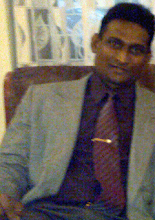
The Time when Arabs Served Sri Lankans...

According to chronicles there had been contacts with non- Muslim Arabs as well as Greeks and Romans even at the early period of the Anuradhapura era. Mahatitta, the great port of Mannar, and Jambukola Pattana, Jaffna connected through a highway to Anuradhapura prompted traders to reach the interior of the Island. Even today there are some tomb stones on the way of some of these Muslims which bear witness to their travel. Later, Muslims also came here as pilgrims. Once the Adem's Peak had been recognized as sacred as Mecca and the foot print on the top was considered as the foot print of Adem while some believed that Adem's tomb was on the rock. When in 1344 the Arab traveller Ibn Battuta arrived in the Island on his way to the sacred Adem's peak, first he entered Jaffna and met with Arya Chakkrawarti, the Tamil Ruler of Jaffna, who controlled at that time the pearl-rich coastal belt of North-West. Battuta describes the Tamil ruler as a Sultan. On the way to Adem's peak he passed through "Konakar" which probably sites "Ratnapura" or "the town of the King" (The unfinished task of Seitawake Rajasingha). This famous Arab trotter states that the Adem's tomb on the top attracted large number of Muslim pilgrims. The sacred mountain that has been forgotten, through the period of European colonization, should be unveiled to the Muslim world and their traditional annual pilgrimages to the Adem's peak must be reawakened.

In the 16 the century, the Muslims being beaten and chased away by Portuguese found shelter in the Seitawake Kingdom under the mercy of King Mayadunne, father of Rajasingha the first. As political asylum seekers, probably for the first time in their history in the Island, the Muslim community faced the challenge of finding life-supportive jobs other than trade. Actually this was a real challenge for them being used only to single occupation for generations. Some clues of the life style of Arab traders camped out in Sri Lanka during the arrival of Battuta can be found in the chronicle "the war of Alakeshwara". This is all about the war and the victory of the provincial ruler of west named Alakeshwara against the invasion of Tamil ruler Arya Chakkrawarti who received Ibn Battuta in Jaffna a decade before. As the chronicle indicates the Arab traders had been camping out with their Horses and stocks of goods in the marshy land south of the river "Kelani". Alakeshwara, as the first step of war, attacked them and occupied the land naturally protected by marsh, and established his troops, where later the rich capital of the Kotte Kingdom arose. Even today the Parliament complex is situated on the soil of the camp site of Arab traders.
During the reign of King Rajasingha 1, the Muslims, who had been chased away from Kotte by Portuguese in the first half of 16th century and sought refuge in Seitawake Kingdom, were absorbed into the "Badda" or "Rajakari system" allowing them to serve the people as well as state in various occupations. A few of them who managed to strongly impress the Monarch were given land "nindagam" with the order to be engaged in different royal departments. One of the well known examples is the story of the ancestor of Wajya Waidyasekera Duwegoda Ranasinghe Mudiyanselage M. M. M. Irshad who is currently an Ayurvedic physician.
Irshad's great great ancestor who was granted the nindagam of Thalduwa in Awissawella had claimed that he was a physician of the Middle Eastern "Yunani" system. However, presently, his descendants practice Ayurvedic medicine learnt from Buddhist Monks. When Irshad's "ge" name, which was granted to his ancestor by King Rajasingha 1, is being analysed, the first part "Wajya" seems to be in relevance with the word "wijya" which means illusion or science related. Otherwise the meaning of Wajya may be in relevance with "wajee" means "sexual power improving". Thus he had been a physician of that kind. "Ranasinghe Mudiyanselage" was commonly offered for people who contributed at the war with a troop collected from the village. With the fall of Seitawake Kingdom they had to abandon their original occupations in order to work for others. In spite of race Sri Lankans were always proud of their "ge" names granted by sovereigns. The Muslims once served the Monarch of Sri Lanka still proudly maintain the royal titles bestowed on them.













